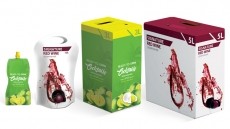Bottled water producers dismiss hormone mimic claim
Martin Wagner and Jorg Oehlmann form the Department of Ecotoxicology at the German university looked at the occurrence of estrogenic activity in bottled water in a study published in the journal Environmental Science and Pollution Research.
The researchers said the study, which analysed 20 brands of mineral water available in Germany including nine bottled in plastic, nine bottled in glass and two in composite packaging (paperboard boxes coated with an inner plastic film) showed that estrogenic compounds leach out of the plastic packaging into the water.
In vivo results
Moreover, Wagner and Oehlmann said that they found that these chemicals were potent in vivo and resulted in an increased development of embryos in a mud snail.
“Breeding of the molluskan model Potamopyrgus antipodarum in water bottles made of glass and plastic [polyethylene terephthalate (PET)] resulted in an increased reproductive output of snails cultured in PET bottles,” said the researchers.
Hormonal reaction
They said they detected estrogen contamination in 60 of the samples analysed, with 33 per cent of the mineral waters bottled in glass and 78 per cent of the waters bottled in PET plastic and the composite packaging showing significant hormonal activity.
“Consumption of commercially bottled mineral water may therefore contribute to the overall exposure of humans with endocrine disruptors,” concluded the scientists.
And they added that their results indicate that a broader range of foodstuff may be contaminated with endocrine disruptors when packed in plastics.
“We must have identified just the tip of the iceberg in that plastic packaging may be a major source of zenohormone contamination of many other edibles,” claims Wagner and Oehlmann.
Packaging link disputed
However, a spokesperson for the BSDA told FoodProductionDaily.com that it is not possible to conclude from this research that there is a connection between packaging and estrogenic activity as it claims the compounds found in the water were not identified, and thus can not be traced back to the packaging.
“Furthermore, such compounds have been found in tests of other kinds of food and drink, and other studies on this issue have found no connection between packaging and estrogenic activity.
“The levels of these compounds are also tiny compared to naturally occurring amounts of estrogens and are well below the EU approved safety levels.”
Consumers can continue to enjoy drinking bottled water and they need not be concerned about the safety of the packaging used, added the Association.
Source: Environmental Science and Pollution ResearchPublished online ahead of print DOI: 10.1007/s11356-009-0107-7Title: Endocrine disruptors in bottled mineral water: total estrogenic burden and migration from plastic bottlesAuthors: Wagner et al








